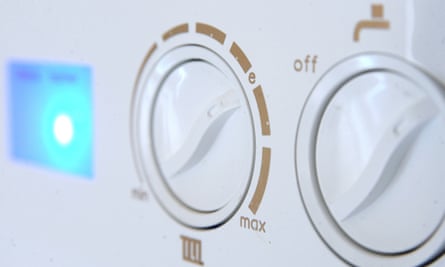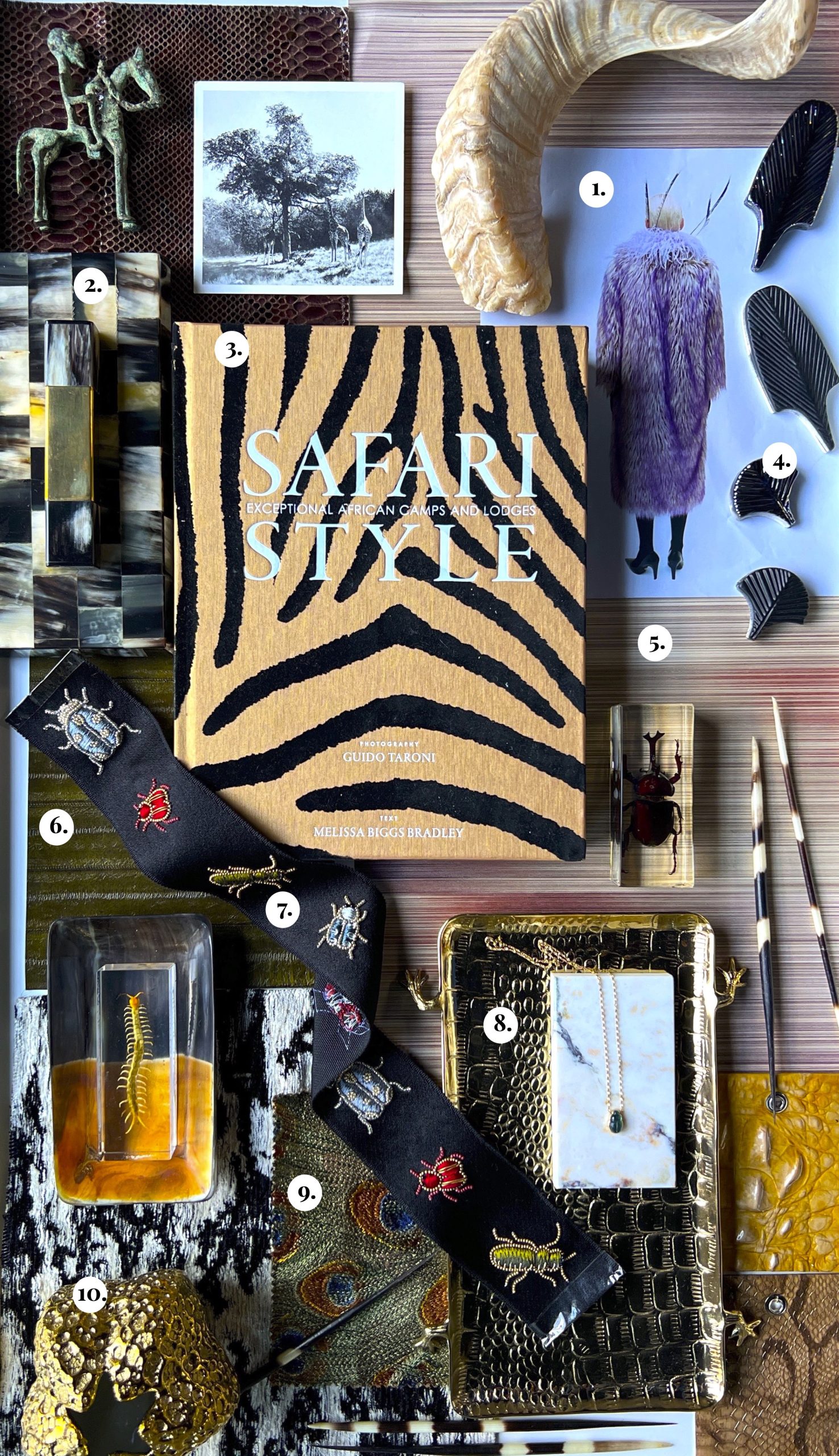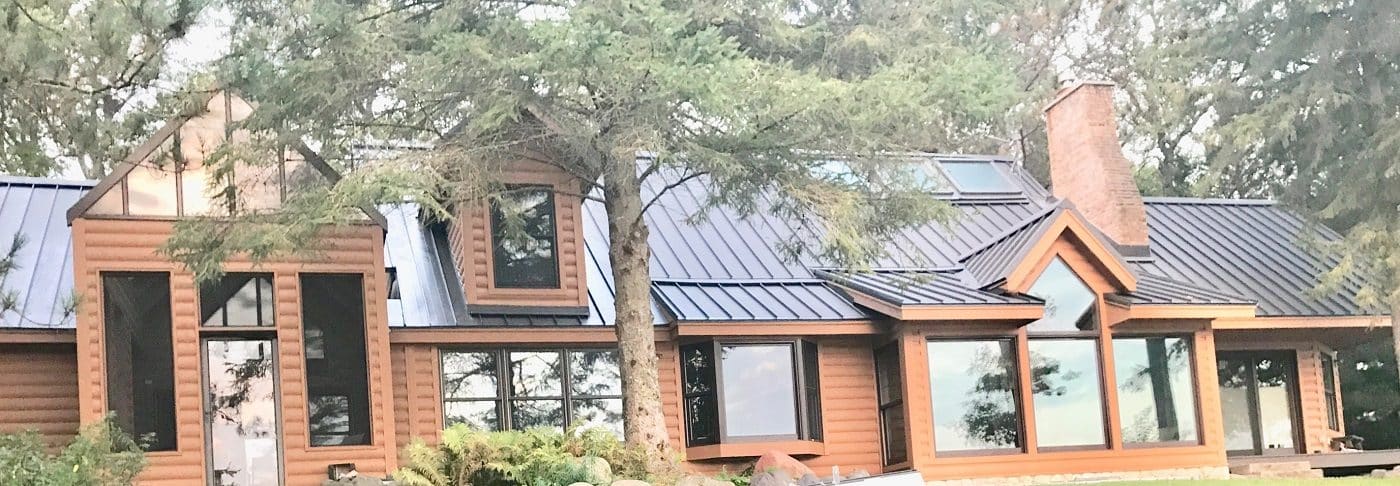The clocks change this weekend, and suddenly there’s no escaping that winter is on its way.
Over the next few months it will be darker and colder, the heating will need to go on, and you may feel more nervous about leaving your home empty in the evenings.
To help you get through the worst of the weather, we have put together a guide to help you get all aspects of your life ready for winter.
Home and garden
There are things you can do now to make sure your home is ready for the colder temperatures, and any adverse weather that may be on its way. “If your home is well prepared and maintained, it will help to avoid having to make any claims that could drive up your home insurance premiums,” says Matthew Harwood at Confused.com’s home insurance arm.
By clearing your gutters of any leaves or other items swept in by the wind, you will ensure they don’t overflow and cause any leaks. “It’s best to do this at least twice a year, and particularly after any bursts of heavy rain,” Harwood says.
If the weather gets windy, there is a risk that any loose roof tiles will fall and damage your property or even injure a passerby, so check for any that need to be fixed.
Make sure your radiators and boiler are working correctly before temperatures drop even further. If a radiator isn’t functioning properly, bleed it to ensure an even spread of heat.
When it comes to your garden or the area around your property, Harwood says you should do the following.
Cut back any overhanging trees or unstable-looking branches before high winds have the chance to blow them into your home.
Make sure your garden shed and other outbuildings are properly secured, “as they tend to take a real beating from extreme cold and rain”.
Tidy or put away any loose items and furniture to prevent them from being moved around by gusts of wind. This will also help protect your belongings from any damage or damp.
Home security
Smart cameras Fitting a smart camera can be a great deterrent to intruders, acting as a visible sign that your property is protected. There are many different types, although the most popular is the video doorbell. There are various options available from about £60, such as Amazon’s Ring or Blink and Google’s Nest, plus lesser-known brands such as Arlo or Eufy.
Doorbells can be wired or battery-powered, allowing DIY fitting. They all connect to the manufacturer’s smartphone app, so you can see what is happening remotely.
Alarm systems These are a great alternative or addition to smart cameras, with many wireless DIY solutions available.
The lockmaker Yale has a range of wireless alarms, with a starter set costing about £120. Smarter options cost from about £175, such as Amazon’s excellent Ring Alarm system, which allows you to set the alarm and receive alerts on your phone.

Timer lights For simulating your presence while out, putting your lights on timers is a quick and easy trick. You can pick up plug timers for about £5 and plug a lamp into them to come on at dusk and go off again at a set time. For those looking for something more advanced, smart bulbs such as Philips Hue allow you to set lights to come on and off at various times, including with a random element to help avoid problems with burglars watching your property.
Energy deals
You can switch but for most people, it probably won’t be worth it. The vast majority of homes in England, Scotland and Wales are currently on standard variable tariffs set at or near the Ofgem price cap. This cap changes every three months, and the latest change – a 7% drop in prices – took place on 1 October.
There are now quite a few fixed-rate tariffs out there, but they typically come with a 6%-7% price premium. Analysts at Cornwall Insight said this week that they are expecting the cap will rise by 3.5% in January, before dropping by about the same amount three months later. If that is accurate, there is little reason to shift to a more expensive fix.
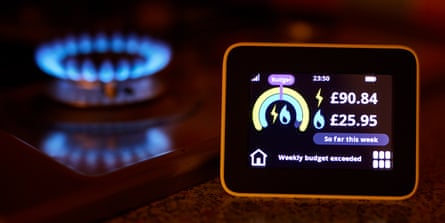
The one exception is arguably E.ON’s Next Fixed v3, which comes at a typical £55-a-year premium (based on average use). It is open to new and existing customers and offers prices fixed for 12 months. If you wish to leave before the year is up, there are exit fees of £75 for both gas and electricity.
If you believe events around the world will result in another rise in energy prices – then it could look like a good decision. It’s not a massive premium to pay for price security.
If you don’t, you would probably be better off on one of the tariffs that reward those willing to shift their consumption to off-peak hours. Guardian Money will undertake a detailed look at these in the coming weeks, so watch this space.
‘Heat the human’
If you want to keep the heating off for as long as possible this winter, it is worth bearing in mind the “heat the human, not the home” mantra. There are heated textiles available for every budget.
Lakeland has the Snuggler, a heated throw with sleeves and a foot pouch, for just under £100.

It also has £24.99 faux fur slippers with inserts to zap in the microwave, or a £19.99 extra-long hot-water bottle that can be wrapped around your back or feet and is likely to appeal to home workers.
The new online brand Snugel has an extra-thick heated blanket for £67, which it says costs only 4p an hour to run.
The company’s other products include a £64 heated gilet that can be used with a power bank (£26). It also has £28 “cocooning” hot-water bottles.
Battling condensation
This is a common problem during the colder months and can lead to damp and mould – but there are ways you can beat it.
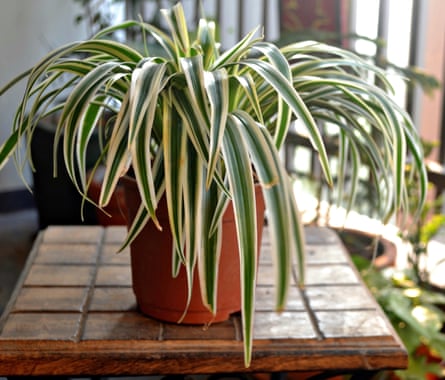
Dehumidifiers draw excess moisture from the air, and many people swear by them, although the bigger ones can be pricey to run. For example, you may want to have one in a room where you dry clothes. The MoneySavingExpert founder, Martin Lewis, has said using a dehumidifier is generally far cheaper than a tumble dryer or putting on the heating.
Smaller, well-reviewed budget dehumidifiers from companies such as Russell Hobbs and Black+Decker can be picked up from about £40-£50 upwards.
Meanwhile, there are a number of budget-friendly houseplants that can help to combat condensation by absorbing excess moisture from the air, including spider plants, snake plants and aloe vera plants, the garden and farm equipment company Atkins says.
The Centre for Sustainable Energy, a charity, says simple things make a huge difference, such as keeping lids on pans when cooking, and drying clothes outdoors (not on radiators) where at all possible.
Smart thermostats
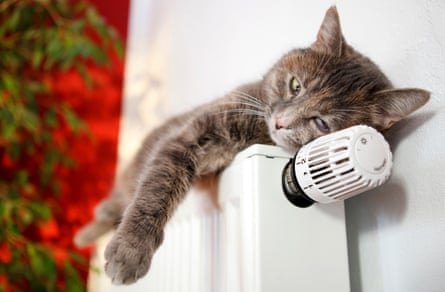
With cold weather creeping in, it is time to review your heating. Simple timers can work well if you keep a consistent schedule. But smart thermostats promise to be more adaptable and efficient by turning down the heating when not needed, such as when no one is home, tracking usage and enabling programming and remote control from your phone. If you had your heating system replaced in the last five years, you may already have one. Some DIY options are available from about £100 but most need a heating engineer to alter wiring on your boiler.
Your wellbeing
Supplements The nutritionist Rhiannon Lambert reckons everyone should consider vitamin D supplements this winter because “it regulates the amount of calcium and phosphate in the body”. This is important to keep teeth, bones and muscles healthy and help the immune system. Most of our vitamin D comes from sunlight, which we get less of in the colder months.
“The NHS recommends that everyone should consider taking a daily vitamin D supplement from September to late March or early April,” Lambert says. She adds that people should be wary of taking too much vitamin D for a long period, as it can cause a calcium buildup in the body. Lambert has created a supplement with the exact dose that Public Health England recommends; it retails at £13.99.

Vaccinations It is recommended that you get seasonal flu and Covid vaccinations if you are at higher risk of serious illness.
In England, you are eligible to get these for free if, for example, you are 65 or over (including those who will be 65 by 31 March 2024) or have one of the listed health conditions. If you are eligible, you can contact your GP or local pharmacy.
Some people may be able to get a free winter flu jab through their work. You can also pay to get a flu jab via most major pharmacy providers: Boots offers it for £19.95.
Exercise If you struggle with motivation when the weather gets colder, Klaudia Lucia, a personal trainer and a Barry’s UK instructor, suggests indoor workouts. “Investing in basic workout equipment like a mat, resistance bands or a set of dumbbells can go a long way,” she says.
“If you are planning on keeping up with outdoor workouts, dressing in layers is key. Moisture-wicking base layers will help keep sweat away from your skin, and insulating layers will trap warmth to keep you toasty and able to move in the cold.”
She recommends investing in thermal leggings and gloves, sweat-wicking tops and comfortable thicker sports bras. “I found a headband to be the most valuable piece of kit last winter to save my ears,” she says.
The right footwear really matters in winter, she says – if it is icy outside, you really need something with good grip.
Lucia says you also need to make sure you warm up before working out, and focus on consistency rather than perfection. “For most of us, maintaining any kind of fitness over the winter can be hard enough. With shorter days, lower motivation and a full social calendar, it’s important to remember that an adapted workout routine is still a workout routine.”
Food
The freezer is your friend Strawberries, raspberries and other soft fruit may not be in season but you can still buy bags of frozen ones in the supermarket. They are usually frozen within a few hours of being picked, so they retain nutrients. Or you can freeze any fresh fruit now that will be out of season in the coming months.
If you want to avoid going to the supermarket or butcher repeatedly during the winter months, stocking up on meats in advance and freezing them will save you multiple trips. The key is to separate meats so that they don’t stick together and cannot be separated without defrosting. Take a tray, line it with clingfilm and place individual steaks, chicken pieces or chops on it with a gap between them, and then put another layer of clingfilm on top. After a few hours in the freezer, the cuts can be bagged without fear of them sticking. In the same way, portion out mince into 100g balls, so you can take out what is needed and don’t have to defrost a whole slab.
Consider a slow cooker The colder months are well suited to the slow cooker, which works best with stews and on joints that tenderise over hours. Indeed, coming in from the cold to a kitchen with the aroma of a curry that has been cooking for hours is very welcoming.
The cookers simmer at a low temperature for a long time – often between three and 12 hours. Coming down in the morning to some overnight porridge is a great start to the day. For vegetarians, butternut squash works well slowly cooked.
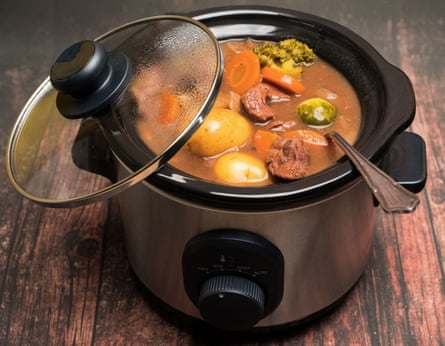
The Energy Saving Trust says slow cookers are “incredibly energy efficient”. Prices vary widely, with the most basic starting at about £20.
Which? reviewers say they were “extremely impressed” by a 1.5-litre version from Progress costing £19.99 at the time of writing.
Winter nutrition Lambert recommends trying to follow a balanced diet during winter that includes a variety of seasonal fruits and vegetables. She says this will give people antioxidants and nutrients to support overall health. Seasonal produce includes celeriac, carrots, turnips, brussels sprouts, parsnips, dark green leafy vegetables, apples and pears.
She adds that you can also support your immune system by supporting gut health through adding probiotic foods into your diet, such as kefir, kombucha, kimchi, sauerkraut and live yoghurt. Probiotics are live bacteria and yeasts promoted as having various health benefits.
Pets
Reflective gear and winter coats With the evenings getting darker earlier, remember to keep you and your dog safe by wearing reflective clothing and using bright or reflective collars or light-up leads, advises the Kennel Club.
Some dog owners will be wondering whether they should get a winter coat for their pet. The veterinary charity PDSA says dogs with fine or thin fur, such as greyhounds and whippets, and dogs that are very young, underweight, old or unwell, will need a warm dog coat when they go out, as they feel the cold much faster than other dogs. It adds: “They should go out in the cold for shorter periods, too.”
Smaller dog breeds such as chihuahuas and some terriers can feel the cold quickly, so may benefit from the extra warmth of a coat in winter, the charity says.

Websites such as Smart Bark (a reviews site) have up-to-date UK guides to the best dog coats. If you are looking for a good value coat, there is a dog-patterned one sold by Mountain Warehouse that gets a lot of love online and is available (at the time of writing) for £14.99.
Winter pet hazards Antifreeze can be extremely dangerous to dogs and cats. If you suspect your pet has licked or drunk any, contact the vet immediately. Many festive treats, such as mince pies and Christmas puddings, are not safe for dogs, so keep them out of sight and reach, the Kennel Club says.
Weather apps
A good weather app can help you avoid the rain and prepare for the day. There are many to choose from but you may find they all come up with slightly different forecasts and focus on different things. The Met Office’s weather app is good for large-area forecasts, particularly for storms and wind. For hyperlocal weather forecasts – for example, to predict the chances of rain within the next hour or so – comparing a few weather apps, such as AccuWeather and Apple’s weather app, gets the best results,
For more extreme events, you can sign up to get flood warnings (a call, text or email) if your home or business in England is at risk. There are similar schemes in Scotland and Wales.

